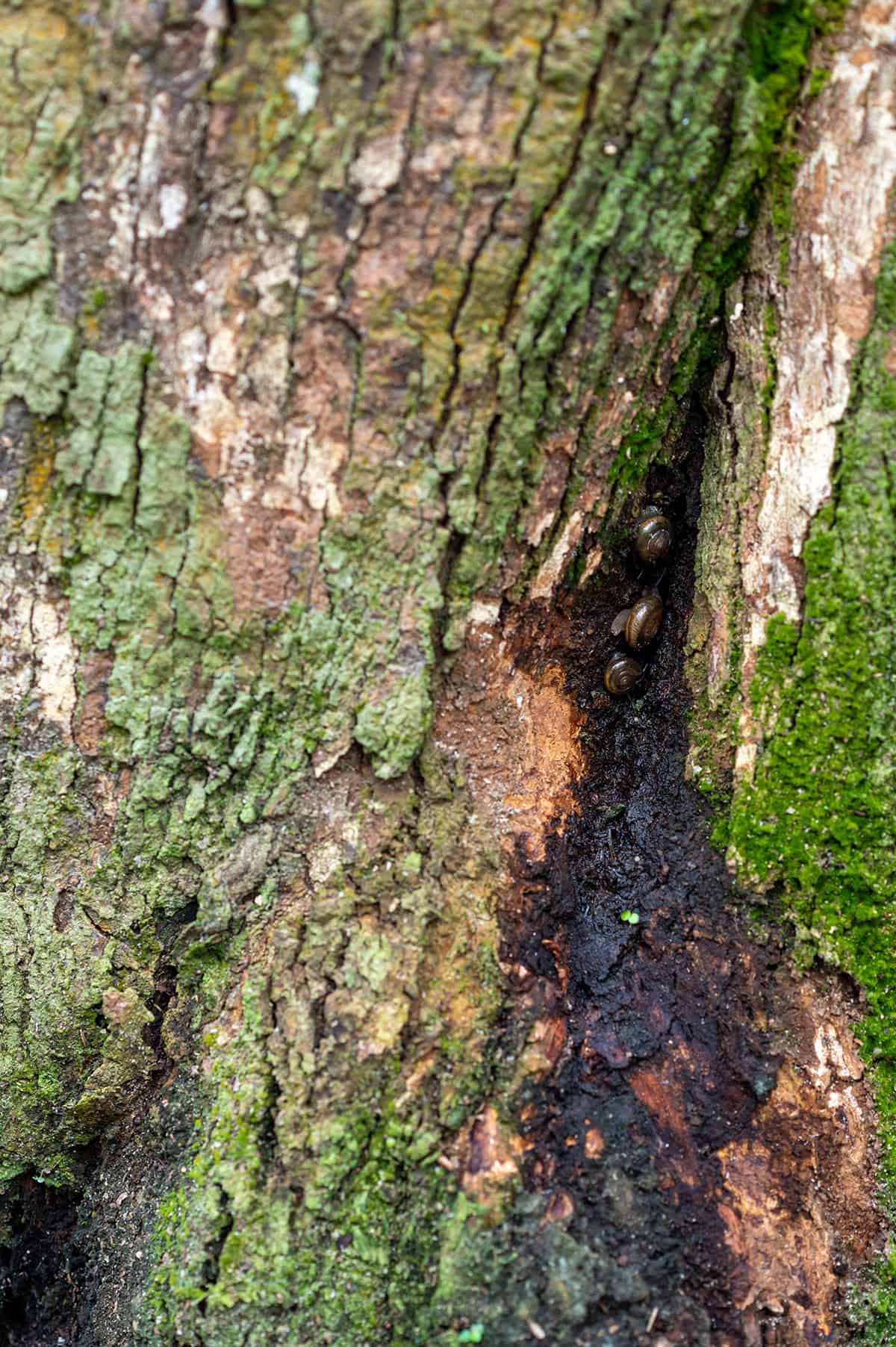Magnolias are a type of tree or shrub that can be evergreen or deciduous. There are over 200 species of Magnolia, and many of them are native to the United States.
The life expectancy of a magnolia tree will largely depend on the care it receives since improper conditions will lead to the untimely decline of this plant.
The other factor which affects how long magnolias live is the species. Different types of magnolias will have different maximum lifespans, but in general, you can expect a healthy and well-maintained magnolia tree to live for between 80 and 120 years.
Table of Contents
Average Lifespan of Magnolia Trees
Southern Magnolias (Magnolia grandiflora) are known to live to around 80 years of age when grown in ideal conditions. However, many other types of magnolia can exceed this. It is fairly common for magnolias to live beyond 100 years, so any magnolias you plant now will likely be enjoyed by future generations.
How Long Do Magnolia Trees Take to Reach Full Height?

Magnolia trees grow at different rates of speed, depending on their species as well as the type of care they receive. Southern Magnolias grow to between 60 and 80 feet tall, and they will take between 20 and 50 years to reach this height. By comparison, the Yulan Magnolia (Magnolia denudata) grows to between 30 and 40 feet tall, taking between 10 and 20 years to reach this height.
Most types of magnolia trees are capable of moderate to fast growth when grown in conditions that mimic their native habitat and climate. Typically you can expect most species of magnolia to grow at a rate of between 2 and 4 feet each year until they reach their maximum height.
This is considered to be a fairly average rate of growth compared with other types of trees. For example, the Paperbark Maple (Acer griseum) can take 50 years to reach a height of 40 feet, making its rate of growth less than 1 foot each year.
What Kills Magnolia Trees Prematurely?
There are a number of things that can interfere with the expected lifespan of a magnolia tree, such as pests and natural disasters. The most common reasons why a magnolia could die before it has the opportunity to reach old age are:
Fungal disease

Magnolia trees rarely suffer from pest infestations. However, they are quite susceptible to a few particular types of fungal disease. These are Phytophthora root rot, honey fungus, and bracket fungus.
Unfortunately, all of these fungal diseases do not present themselves on the foliage like many others and instead occur underground. In most cases, the disease will have caused too much damage for the magnolia to recover by the time anyone realizes what is causing the problem.
Phytophthora root rot

This is a type of disease caused by fungus-like organisms, which lay dormant in the soil until a hose plant is available to latch onto. The organisms attack the roots of the plant, causing them to decay and, of course, meaning that the plant is unable to absorb moisture or nutrients.
Phytophthora root rot is most prevalent in waterlogged soils, though it can happen in any soil. The symptoms of Phytophthora root rot are much the same as any other type of root rot, so it can be difficult to determine what the real cause is. These include foliage and branches dying back, yellowing of leaves, and the eventual death of the tree.
Honey fungus

This is a very destructive type of fungus that attacks and kills the roots of trees and causes the dead wood of the tree to decay. Symptoms include a cracked trunk, pale or smaller than expected foliage, and inability to flower and die back. There are some telltale signs of honey fungus, but these don’t occur in all cases.
These are the presence of white fungus near the base of the trunk or in between the bark and wood and yellow-colored mushrooms growing in the soil surrounding the tree. There is no way to prevent or cure honey fungus, so when a magnolia is diagnosed with this, it will need to be dug out from the roots and disposed of.
Bracket fungus
Bracket fungus works by decaying the tree from the inside, rotting the heartwood. By the time any damage is visible, the tree is too diseased to recover. There is no way to control or prevent bracket fungus, so if you find this on your magnolia, you will need to have the tree excavated and destroyed.
Drought
Most magnolia trees require to be grown in consistently moist soil, though there are a few species that are able to cope with short periods of drought. Any extended period of drought will cause magnolias to die back, and they may not be able to recover from this. Ensure your magnolia is provided plenty of water during dry spells to prevent this and extend its lifespan.
Waterlogged soil
Though magnolias need plenty of water to thrive, they cannot survive in soils that are continually wet or waterlogged. Plant magnolias in well-draining, sandy soil so that in the event of heavy rainfall, they won’t be stuck in waterlogged conditions. Also, try to make sure you don’t overwater any magnolias that are grown in pots.
How to Extend the Life of Magnolia Trees
Magnolia trees are easy to care for, especially once mature. If you meet their minimal requirements, you stand a good chance of having a magnolia that survives for a century or more.
Maintain moist soil

Magnolia trees and shrubs love to be grown in moist soil. Some species can tolerate short periods of drought, but this can weaken them and make them more susceptible to an early demise. To extend the lifespan of your magnolia as much as possible, keep them well-watered so that the soil remains moist but not wet.
Allow appropriate light
Different types of magnolia trees have different lighting needs, and you need to be aware of what they are so you can be sure to plant the tree in the right spot. Most magnolias will thrive in full sun or partial shade, though a few prefer a shadier position, such as the Umbrella Magnolia (Magnolia tripetala). Meeting the lighting requirements of the magnolia will help it to grow strong and healthy.
Avoid pruning
Magnolia plants are sensitive to over-pruning, and in fact, pruning them too heavily can cause stunted growth and even their death. Magnolias don’t need to be pruned, so you should only prune if you need to restrict growth or remove dead or damaged branches.
Deciduous magnolias should only be pruned toward the end of summer, while evergreen magnolias should be pruned in spring. If you need to drastically reduce the size of your magnolia, you will have to do this gradually by removing a few branches each year, otherwise, the tree can die from stress.
Shelter from frost

Hardy magnolias can suffer die-back from frost, but new shoots will appear as the weather warms. Late frosts can damage the flowers of early bloomers, which can weaken the tree. Some magnolias are not hardy and should not be kept in climates that experience frost.






